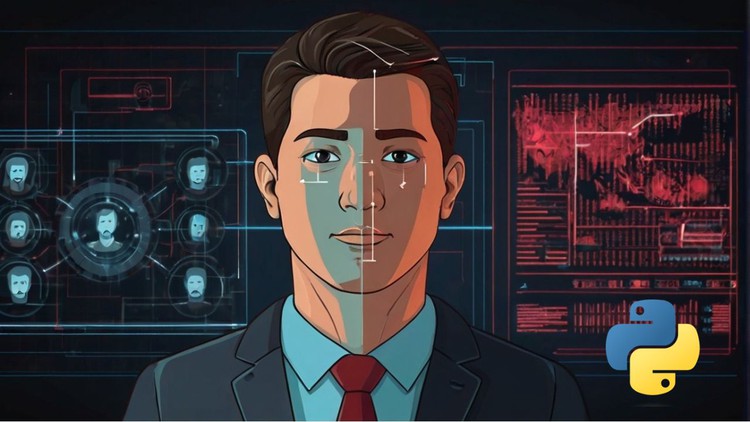
Learn how to build facial recognition, emotion detection, age detection, and eye tracking system using OpenCV & Keras
What you will learn
Learn how to build facial recognition system using OpenCV
Learn how to build emotion detection system using OpenCV
Learn how to build age detection system using OpenCV
Learn how to build eye tracking system using OpenCV
Learn how to create access management and identity verification system
Learn how to create training data for facial recognition system
Learn how to create function to load images from training data folder
Learn how to activate camera using OpenCV
Learn how to train emotion detection model using Keras
Learn how facial recognition systems work. This section will cover data collection, data preprocessing, model training, scanning face, and feature extraction
Learn the basics fundamentals of facial recognition technology, such as getting to know its use cases, technologies used, and limitations
Learn how to draw rectangle around face
Description
Welcome to Computer Vision Bootcamp: Building Face Recognition with OpenCV course. This is a comprehensive projects based course where you will learn step by step on how to build a face recognition system, emotion detection system, age detection system, and eye tracking system using OpenCV. This course is a perfect combination between computer vision and image processing. This course will equip you with essential skills in feature extraction and pattern recognition, enabling you to develop complex facial recognition systems. In the introduction session, you will learn about the basic fundamentals of facial recognition, such as getting to know its use cases, technologies that will be used, and its limitations. Then, in the next session, you will learn how facial recognition technology works. This section will cover data collection, preprocessing, model training, feature extraction, and face matching. Afterward, we will start the project section, in the first section, we will build facial recognition for the identity verification system. Firstly, we are going to prepare the training data. It consists of several information like name, photo, age, and gender. Then, the data will be used to train the facial recognition model and it will enable the model to verify if you are the same person as the stored data based on the facial structure analysis. In addition, the model will also be able to make a decision, if the face matched then the model will print, access granted, however if the face did not match, then, the model will print, access denied. Meanwhile, in the second project section, we will build an emotion detection system using OpenCV. In this case, we will obtain a dataset from Kaggle and use that data to train the model to be able to detect emotion and facial expression. Then, in the third project section, we will build an age detection system using OpenCV. We will use a dataset containing photos of people from various ages and use it to train the model to predict someone’s age based on their facial structure. In the fourth project section, we will build an eye tracking system that can be utilized to analyze movements of a student’s eyes to monitor their gaze patterns during an online exam. In addition, the model will also be able to notify the teacher if suspicious behavior is detected. This technology can potentially help teachers and college professors to maintain the academic integrity in their online class.
First of all, before getting into the course, we need to ask ourselves this question: why should we build facial recognition systems? Well, here is my answer: facial recognition systems play a pivotal role in supporting security measures across various sectors, including banking, government, and corporate environments. By accurately identifying individuals based on unique facial features, these systems provide a robust means of access control, ensuring only authorized personnel can gain entry to restricted areas or sensitive information. Moreover, in the digital world, facial recognition serves as a powerful tool for identity verification and authentication, safeguarding online accounts, transactions, and personal data from unauthorized access or fraudulent activities. Its ability to verify identity in real time offers unparalleled security and convenience, mitigating risks associated with traditional authentication methods like passwords or PINs, which are susceptible to theft or exploitation. As the threat landscape continues to evolve, the adoption of facial recognition technology remains paramount in safeguarding assets, maintaining trust, and upholding the integrity of digital ecosystems
Below are things that you can expect to learn from this course:
- Learn the basics fundamentals of facial recognition technology, such as getting to know its use cases, technologies used, and limitations
- Learn how facial recognition systems work. This section will cover data collection, data preprocessing, model training, scanning face, image preprocessing, face features extraction, and access management
- Learn how to activate camera using OpenCV
- Learn how to build facial recognition system using OpenCV
- Learn how to create training data for facial recognition system
- Learn how to create function to load images from training data folder
- Learn how to create access management and identity verification system
- Learn how to draw rectangle around face
- Learn how to train emotion detection model using Keras
- Learn how to build emotion detection system using OpenCV
- Learn how to build age detection system using OpenCV
- Learn how to build eye tracking system using OpenCV
Content